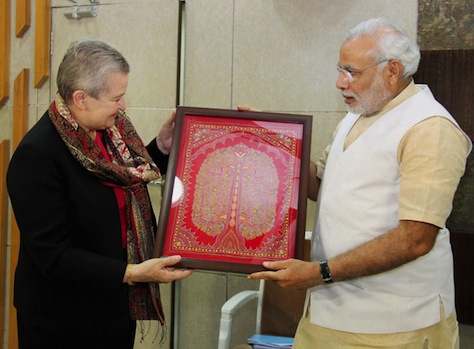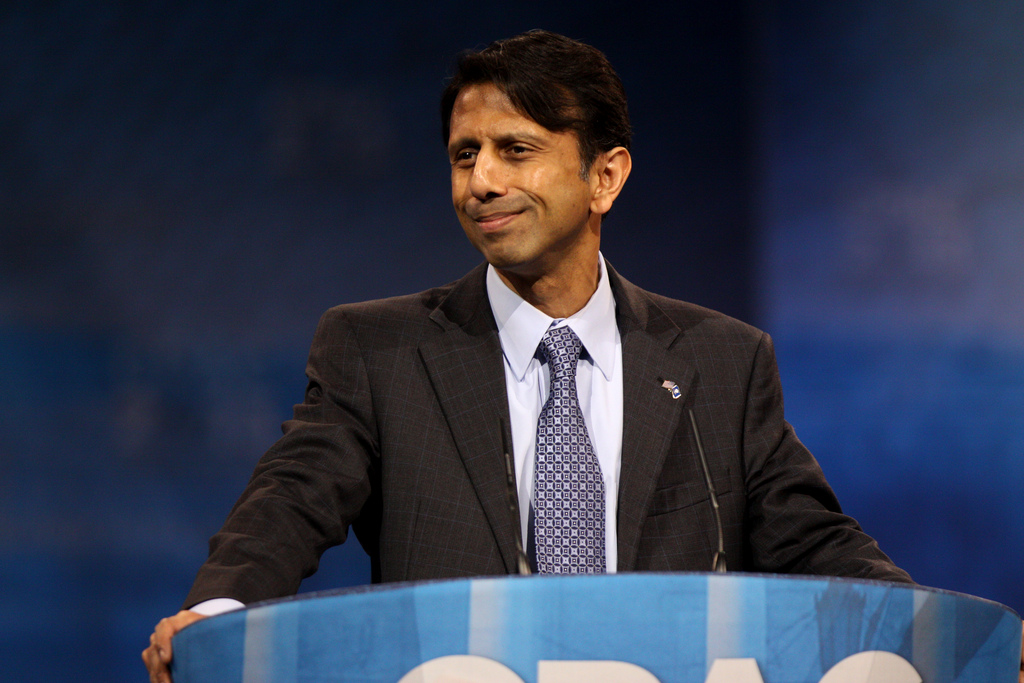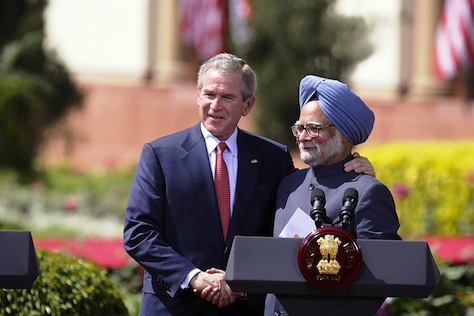India starts its massive, nearly five-week, nine-phase general election in just seven days.![]()
![]()
So you figure that US-Indian relations must be on fairly poor terms when the United States ambassador to India, Nancy Powell, stepped down on Monday after less than two years on the job.
According to reports in both the United States and India, Powell had become increasingly ineffectual due to the Khobragade affair.
* * * * *
RELATED — In Depth: India’s elections
* * * * *
Her resignation came amid growing reports that her recall was imminent, though US officials strongly denied that yesterday:
And at a Monday briefing, deputy State Department spokeswoman Marie Harf strongly denied that Powell’s resignation was anything but a 37-year career diplomat retiring after serving posts all over the world….. “All the rumors and speculation are, quite frankly, totally false,” Harf said.
Powell’s decision wasn’t really Powell’s fault — she will retire in May after a 37-year career in the foreign service, having served as the US ambassador to Uganda, Ghana, Pakistan and Nepal, as an assistant acting secretary of state three times, director general of the US Foreign Service, and previously as consul general in Kolkata (previously Calcutta) in the early 1990s and political counselor at the US embassy in India in the mid-1990s.
So Powell was already one of the most experienced hands that the US state department could have deployed to India.
The Khobragade incident is essentially a minor diplomacy scandal. US officials arrested deputy consul general Devyani Khobragade in December of last year on suspicion of visa fraud — and then strip-searched and detained Khobragade. The incident initially caused a minor kerfuffle over diplomatic privileges and immunities, but quickly escalated to the point where it’s had an extremely adverse effect on the bilateral relationship. India began stripping US diplomats of certain privileges, and Indian officials made themselves increasingly less accessible to Powell.
Meanwhile, Powell had to deal with the even thornier issue of how the United States ought to handle Narendra Modi, the chief minister of Gujarat and, increasingly the frontrunner to become India’s next prime minister. Modi, who’s leading the parliamentary election campaign of the center-right, Hindu nationalist Bharatiya Janata Party (the BJP, भारतीय जनता पार्टी) was denied travel visas to both the United Kingdom and to the United States, the latter in 2005, stemming from the controversy over Modi’s role in fomenting — or at least, not stopping — the worst Hindu-Muslim riots of the past two decades in 2002, which left over 1,000 Muslims dead and occurred shortly after Modi took office in Gujarat.
Following the release of a recent report from the US Congress, that policy seems almost certain to change if Modi becomes India’s next prime minister.
Powell met Modi in February, the first ambassador to do so since Modi emerged as a potential prime minister. But the Khobragade affair delayed the meeting (pictured above), and some reports from India claim that Washington faults Powell for being too close to the administration of Mamohan Singh and foreign policy advisers within Singh’s party, the Indian National Congress (Congress, भारतीय राष्ट्रीय कांग्रेस).
Modi hasn’t spoken at length about his foreign policy, but most Indian observers believe he will be relatively more muscular vis-à-vis Pakistan, relatively more aloof with Europe and the United States, and relatively friendlier with China, on the basis of past trade-related cooperation between China and Gujarat.
With a fresh start, expect US president Barack Obama to appoint a relatively high-profile political ambassador to replace Powell. One option he should consider is Bobby Jindal (pictured above), a two-term governor of Louisiana, former member of the US House of Representatives, a conservative Republican and an Indian American who was raised in a Hindu household, though he later converted to Roman Catholicism.
It wouldn’t be the first time that Obama recruited a sitting Republican governor for such an important post — Utah governor Jon Huntsman served as the Obama administration’s ambassador to China from 2009 to 2011.
Though the India portfolio isn’t always filled by a high-profile political official, there’s a long pedigree of important figures in the role:
- renowned industrial economist John Kenneth Galbraith in the early 1960s served as ambassador for US president John F. Kennedy and became especially close to Indian founding father and its first prime minister Jawaharlal Nehru.
- Daniel Patrick Moynihan served as ambassador from 1973 to 1975 under US president Richard M. Nixon, at the height of Indira Gandhi’s government, immediately before he would return to the United States and launch a three-decade career as a Democratic US senator from New York.
- Robert Goheen, a classics professor and president of Princeton University from 1957 to 1972, served as ambassador from 1977 to 1981 for US president Jimmy Carter. Goheen was born in what was, at the time, British India, where his parents were Presbyterian missionaries.
- Richard Celeste, the Democratic governor of Ohio from 1983 to 1991 and former director of the Peace Corps, served as ambassador from 1997 to 2001 under US president Bill Clinton at a particularly difficult time in the relationship — India became a nuclear-armed country in 1998, and the United States imposed economic sanctions in retaliation.
- Tim Roemer, a former Democratic member of the US House of Representatives from 1991 to 2003, served as the Obama administration’s first ambassador from 2009 to 2011.
US-Indian relations were never incredibly strong during the Cold War. Nehru, wary of Western (or any other international) influence after winning independence from the United Kingdom, his policy of panchasheela (non-alignment) kept India at a distance from the Soviet Union, but especially the United States. Due as much to geography as to anything else, India had been closer to the Soviet Union, now Russia, and China than to the United States. Moreover, US support for Pakistan throughout the Cold War also chilled relations with India.
But in the 21st century, US-Indian ties have grown stronger, with increasing economic and trade links between the two countries (nearly $63.7 billion in trade last year), and a landmark nuclear agreement in 2008 agreed between US president George W. Bush and India’s outgoing prime minister Manmohan Singh (pictured above) that essentially recognized India as a global nuclear power, provided for greater US cooperation over civil nuclear energy matters, and opened the global market for nuclear technology and fuel to India.
Jindal photo credit to Gage Skidmore/Flickr.


